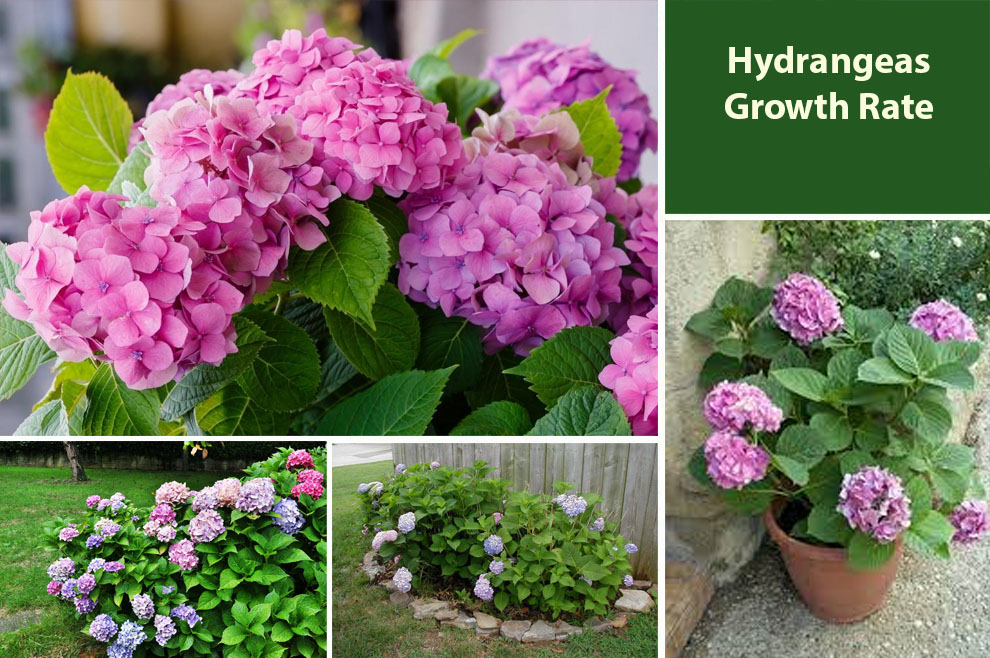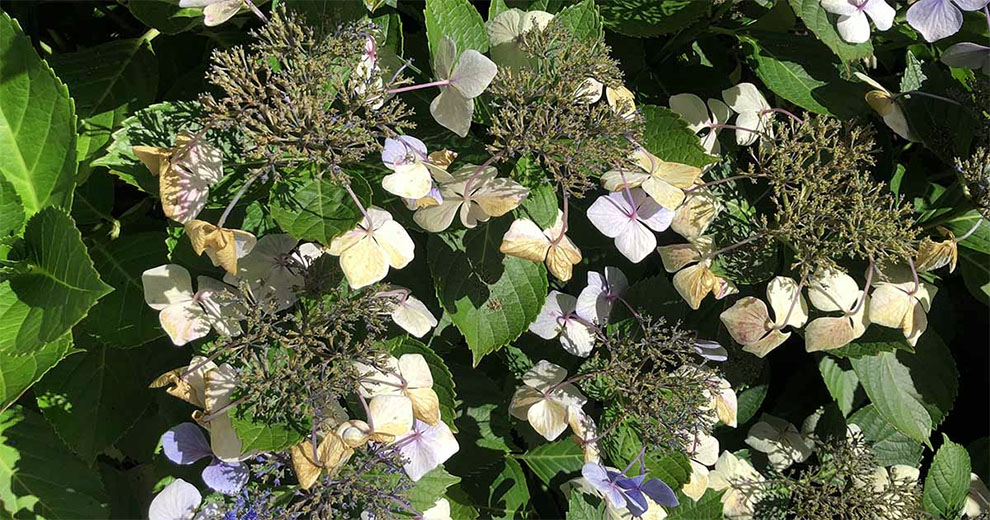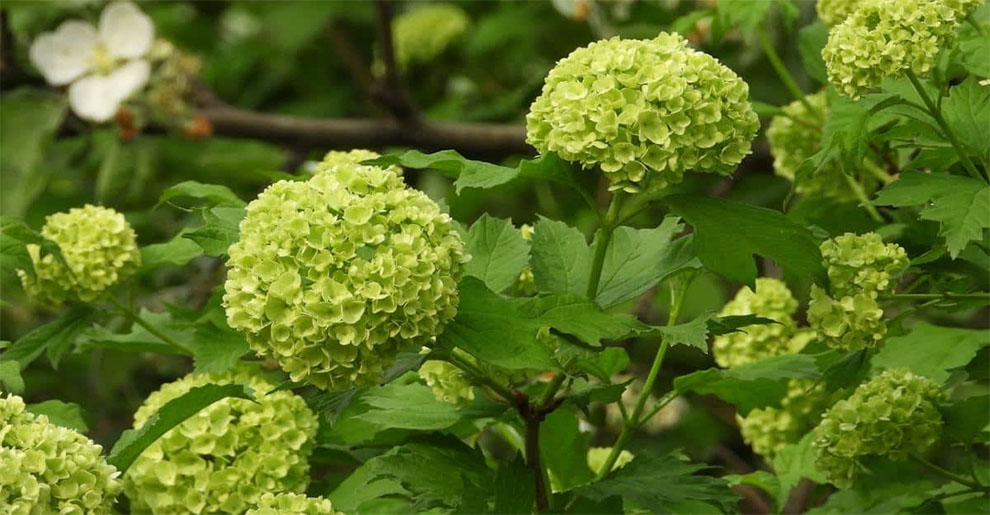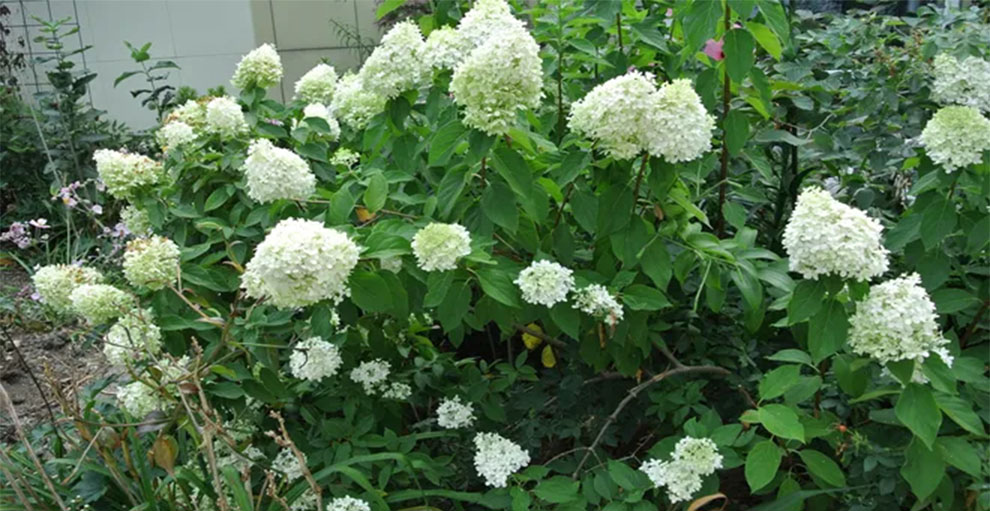How Fast Do Hydrangeas Grow and Quickly Produce Flowers?
Hydrangeas are moderate growers. They have a steady growth rate of 1-2 feet annually. Though this varies a bit with the variety chosen and growing conditions.

Hydrangeas are popular flowering shrubs known for their stunning blooms and lush foliage. If you’re considering adding hydrangeas to your garden or landscape, understanding their growth rate can be helpful in planning and caring for these plants.
The growth rate of hydrangeas can vary depending on several factors, including the specific variety, environmental conditions, and care provided. On average, hydrangeas tend to have a moderate growth rate, neither extremely fast nor slow.
When hydrangeas are young and establishing themselves in their new environment, their growth rate may be relatively slow. During this period, they focus on developing a strong root system and may not exhibit much above-ground growth.
How fast do hydrangeas grow once established? Well, hydrangeas grow up to a foot per year on average once they start reaching maturity.
However, it’s important to note that this is a general range, and individual plants mnbay grow at different rates. Factors such as the availability of sunlight, appropriate watering, suitable soil conditions, and pruning play crucial roles in determining the growth rate of hydrangeas.
Overall, hydrangeas are relatively moderate growers that require patience and consistent care to thrive. By providing them with suitable growing conditions, you can encourage healthy growth and enjoy the beautiful blooms that hydrangeas are known for.
How Quickly Do Hydrangeas Grow?
In general, hydrangeas are not considered fast-growing plants compared to some other species. Hydrangeas typically have a moderate growth rate, with an average annual growth of about 1- 2 feet in height and spread.
However, it’s important to note that this growth rate of hydrangeas is subjected to a lot of factors like soil quality, sunlight exposure, moisture levels, and pruning practices.
Additionally, different hydrangea species and cultivars may have slightly different growth rates. Some varieties may exhibit slower growth, while others may have a slightly faster growth rate.
Let’s look at the growth rate of different varieties of hydrangeas:
A. Limelight hydrangeas
Limelight hydrangeas are considered relatively fast growers compared to some other hydrangea varieties.On average, limelight hydrangeas can grow between 12 and 24 inches per year under favorable conditions.
It’s worth mentioning that the growth rate of Limelight hydrangeas may be more pronounced during the active growing season, typically in spring and summer when they are actively producing new shoots and foliage.
During the winter months, the growth rate may slow down or become dormant.
B. Climbing hydrangeas
They are generally considered slow to moderate growers. During the initial establishment phase, climbing hydrangeas may exhibit slower growth as they focus on developing a strong root system.
It’s not uncommon for them to take a few years to fully establish themselves and start showing significant growth.
Once established, climbing hydrangeas typically grow at a moderate pace, adding around 12 to 24 inches per year.
C. Oakleaf hydrangeas
Oakleaf hydrangea varieties are generally considered moderate growers. They typically grow between 12 and 24 inches per year under favorable conditions.
These shrubs often start with relatively slow growth in their early years as they establish a strong root system. During this establishment phase, the focus is primarily on root development rather than above-ground growth.
Oakleaf hydrangeas are known for their long lifespan and durability. More about the lifespan of hydrangeas here.
D. The Annabelle hydrangea
Annabelle hydrangea is known for its vigorous growth rate. It typically grows relatively quickly compared to other hydrangea varieties. Under ideal growing conditions, Annabelle hydrangeas can reach a height and spread of 3 to 5 feet within a single growing season.
In terms of annual growth, the Annabelle hydrangea can produce new shoots that extend by approximately 12 to 24 inches in a favorable environment.
While Annabelle hydrangeas are fast growers, they tend to have a more shrub-like growth habit compared to other hydrangea species.
E. The Endless Summer hydrangea
Endless Summer hydrangea is a popular cultivar known for its ability to bloom on both old and new wood, providing continuous flowers throughout the growing season. It is usually considered to have a moderate growth rate.
Typically, the Endless Summer hydrangea can reach a height and spread of 3 to 5 feet over a few growing seasons. It may produce new shoots that extend by approximately 6 to 12 inches per year under favorable conditions.
How Many Inches Do Hydrangeas Grow In A Year?
On average, hydrangeas typically grow between 4 and 24 inches per year. However, it’s important to note that this is just an estimate, and individual plants may exhibit different growth patterns.
How Fast Do Hydrangeas Grow from Cuttings?
When propagating hydrangeas through cuttings, know that hydrangea cuttings usually take about 2 to 3 weeks to form roots, but it may take longer for some varieties. Once the roots have formed, new growth will begin to emerge from the cutting.
After rooting, the growth rate of the hydrangea cuttings will depend on factors such as light, temperature, humidity, and how well you care for them.
With proper conditions and care, the cuttings can start growing at a moderate pace, producing new leaves and shoots over several weeks or months. It’s important to provide them with adequate moisture, well-draining soil, and protection from extreme temperatures or harsh weather conditions.
Hydrangeas Growth Rate During Different Stages of Its Lifecycle
Hydrangeas exhibit different growth rates during different stages of their lifecycle. Here’s a general overview of the growth rates you can expect at each stage:
A. Germination and establishment stage

When you first plant a hydrangea, it focuses its energy on establishing a strong root system. During this stage, the growth rate is relatively slow as the plant puts most of its resources into root development.
Germination times can vary greatly, and it may take several weeks or even a few months for hydrangea seeds to sprout. It’s essential to be patient and provide proper watering and hydrangea care to support healthy root growth.
B. Seeing the greens develop

The development of leaves, stems, and roots in hydrangeas can vary. Hydrangeas typically begin to develop leaves shortly after germination or when new growth emerges from established plants.
This can occur within a few weeks to a couple of months, depending on the hydrangea species and growing conditions.
As the leaves develop, hydrangeas will also start producing stems. The rate of stem development can vary, but you can generally expect noticeable stem growth within the first few months.
When starting from seeds, the initial root development occurs during the germination process, which can take several weeks to a couple of months.
When propagating hydrangeas from cuttings or divisions, root development is typically quicker since they already have some existing root structure.
Generally, you can expect the development of a healthy root system within a few weeks to a few months, depending on the specific conditions and care provided.
C. Mature Stage

As the hydrangea reaches maturity, its growth rate slows down. At this stage, the plant’s primary focus is on maintaining its existing size and producing flowers.
While the growth rate may decrease, the hydrangea continues to grow incrementally each year, albeit at a more moderate pace.
Generally, it takes several years for a hydrangea plant to reach its mature size and produce abundant flowers.
What Makes Hydrangea Grow Faster (Enhancing Hydrangeas Growth Rate)
Several factors can contribute to the quicker growth of hydrangeas. By optimizing these conditions, you can help promote healthy and vigorous growth:
1. Right variety: Choosing the right variety of hydrangea is crucial to ensure its growth and overall success in your specific growing conditions. Selecting hydrangea varieties that are native to or adapted to your specific climate and growing conditions can promote faster growth.
When choosing a hydrangea, look for varieties known for their vigorous growth. These varieties may have traits such as more rapid stem elongation and a propensity for producing new shoots and branches.
2. Sunlight: Hydrangeas generally thrive in bright, indirect sunlight. Providing them with the right amount of sunlight is crucial for their growth. Ensure that your hydrangeas receive at least 4 to 6 hours of sunlight each day.
However, it’s also important to protect them from the intense midday sun, especially in hot climates, as it can cause stress and sunburn.
3. Watering: Consistent and adequate watering is important for hydrangeas to grow faster. They prefer moist, well-draining soil. Water deeply at the base of the plant, rather than sprinkling the leaves, to encourage the roots to grow deeper.
Avoid overwatering, as it can lead to root rot. Regularly check the moisture level of the soil and adjust your watering accordingly.
4. Fertilization:
Providing proper nutrients through fertilization can help hydrangeas grow faster. Use a balanced, slow-release fertilizer formulated for flowering shrubs.
Apply the fertilizer in early spring or as directed on the package. Avoid excessive fertilization, as it can lead to excessive leaf growth at the expense of flower production.
5. Soil Quality: Hydrangeas prefer rich, loamy soil with good drainage. Improve the soil quality by incorporating organic matter like compost or well-rotted manure. This helps retain moisture, provides essential nutrients, and promotes healthy root development.
6. Protection from Harsh Conditions:
Hydrangeas can be sensitive to extreme weather conditions. Protect them from harsh winds and frost, which can cause damage and hinder growth. Mulching around the base of the plant can help regulate soil temperature and retain moisture.
7. Pruning: Pruning hydrangeas at the right time can stimulate new growth and encourage faster growth. The pruning requirements vary depending on the hydrangea variety, so it’s important to understand the specific pruning guidelines for your particular type of hydrangea.
Pruning in early spring before new growth emerges or after the plant has finished flowering can help remove dead or weak branches and promote overall plant vigor.
8. Pests and diseases:
Regularly inspect your hydrangeas for any signs of pests or diseases. Look for chewed leaves, discolored or wilting foliage, distorted growth, or unusual spots or lesions on the leaves and stems. Early detection can help prevent the spread of pests and diseases.
By optimizing these factors and providing proper care, you can create favorable conditions for hydrangeas to grow faster and achieve their full potential.
